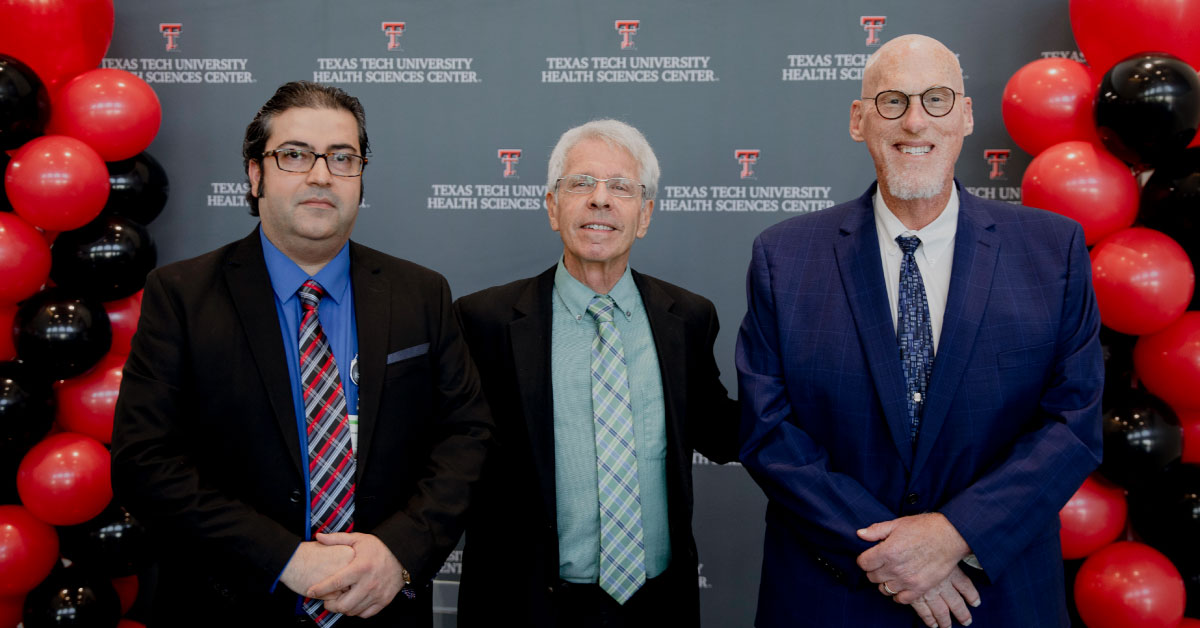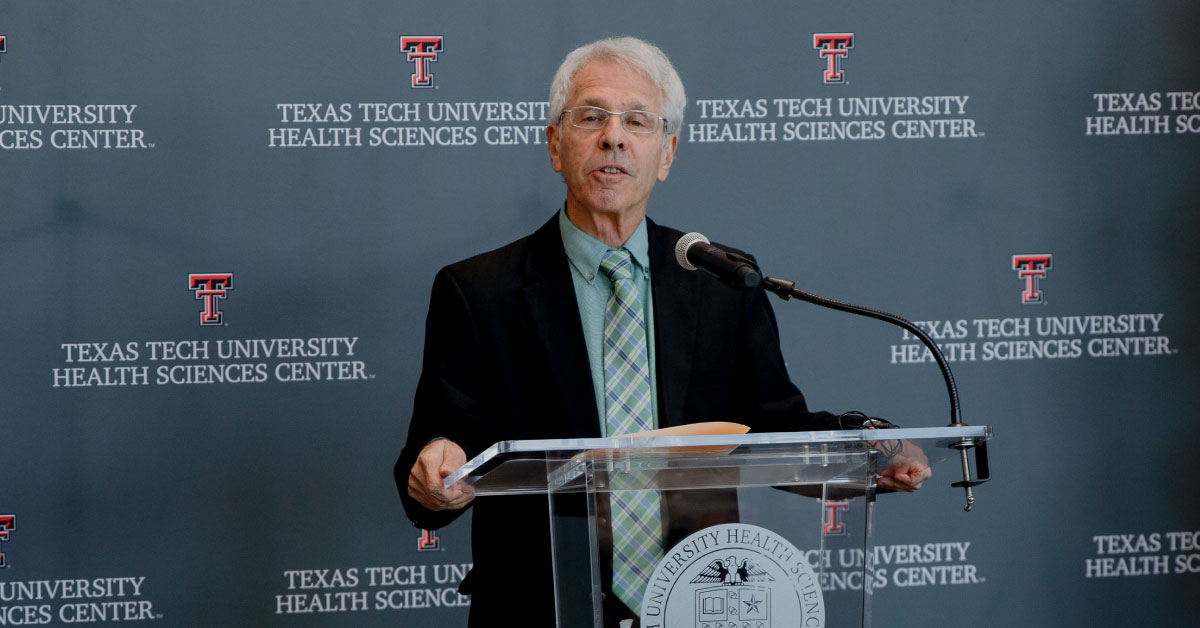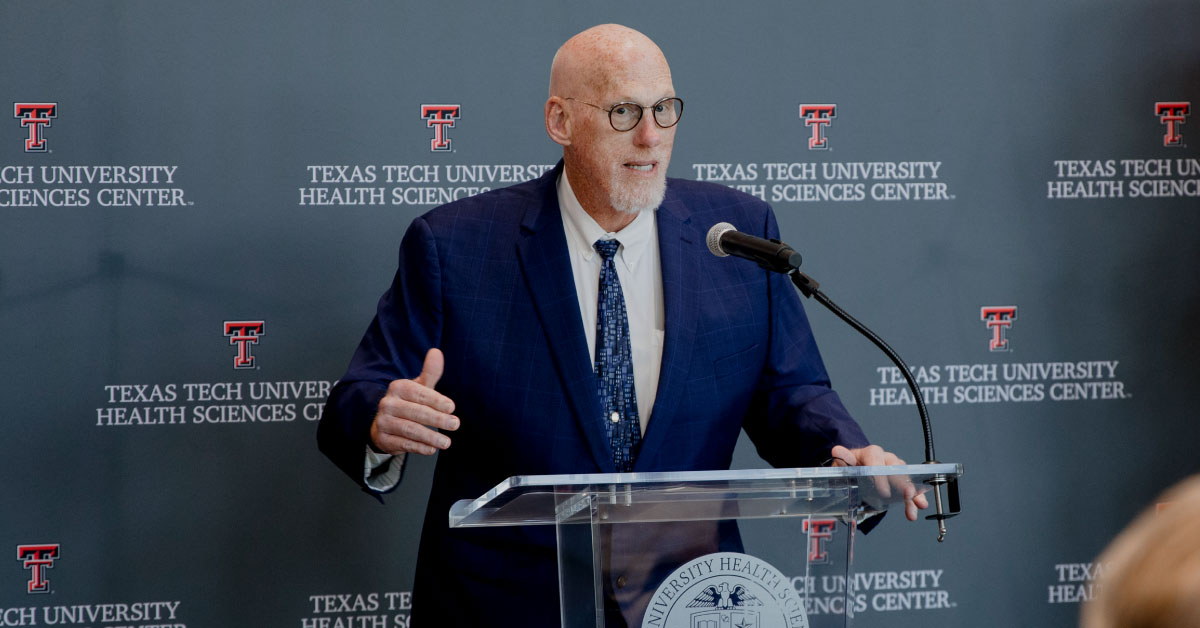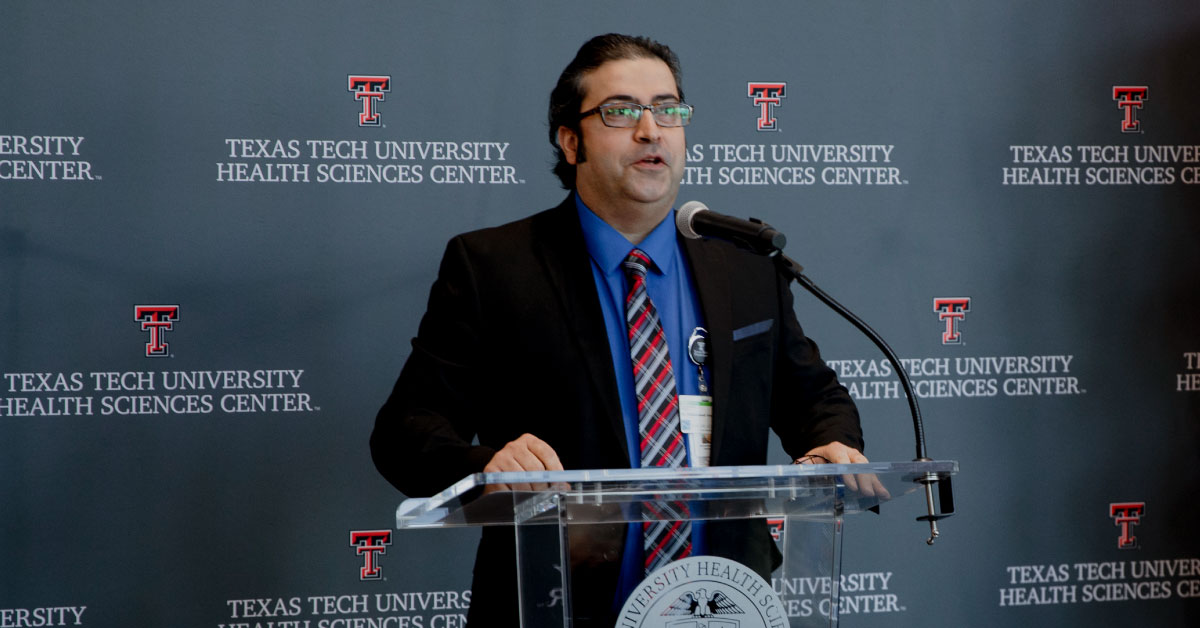School of Medicine Effort Seeks to Bring Relief to Patients Through Collaboration, Innovation
 Peripheral artery disease (PAD) is a condition caused by the buildup of plaque that
narrows and restricts blood flow to the body’s peripheral arteries, causing pain,
impairing mobility and, in advanced cases, leading to amputation.
Peripheral artery disease (PAD) is a condition caused by the buildup of plaque that
narrows and restricts blood flow to the body’s peripheral arteries, causing pain,
impairing mobility and, in advanced cases, leading to amputation.
To help advance the treatment of this potentially life-threatening condition that affects more than 200 million people across the globe, the Texas Tech University Health Sciences Center (TTUHSC) established the TTUHSC School of Medicine Center of Excellence in Peripheral Artery Disease.

Steven L. Berk, M.D.
"Texas Tech University Health Sciences Center School of Medicine collaborated with University Medical Center and has put together a team that is tackling this disease, using newly developed techniques to improve circulation and addressing issues such diabetic control, cigarette smoking cessation, wound treatment and methods to preserve limbs and avoid amputation,” said Steven L. Berk, M.D., TTUHSC executive vice president and School of Medicine dean. “This group has published important papers, developed new techniques and provided a broad spectrum of education that involves students and residents.”
The new TTUHSC initiative includes the collaborative efforts of multidisciplinary clinicians at the university. Their mission is to provide successful screening, treatment and education related to PAD and critical limb ischemia (CLI), a condition developed by PAD patients that causes painful ulcers to develop on the legs that can become infected and lead to amputation. Current data shows CLI patients have a 20% mortality rate and limb loss rate after one year. The mortality rate for those who undergo amputation increases by 48% at one year and 71% at three years.

Scott Shurmur, M.D.
Scott Shurmur, M.D., chair for the School of Medicine’s Department of Internal Medicine and director of the Texas Tech Physicians Center for Cardiovascular Health, said a center of excellence is a program assembled within a health care institution to provide a unique concentration of expertise in a certain disease area, which in this case is PAD.
“We also assembled a group of additional individuals in addition to the health care givers to really help provide continuous comprehensive care, from diagnosis to treatment to follow up care,” Shurmur said.
That multidisciplinary approach will include collaborations with various medical practitioners such as interventional cardiologists (specialists in peripheral endovascular intervention), vascular surgeons, imaging cardiologists, wound care specialists and podiatrists. The team also will include medical specialists who cover risk factors and co-morbidities such as endocrinologists, rheumatologists, orthopaedics and nephrologists.
In addition, the team will collaborate with emergency medicine physicians, general internists and hospitalists who may encounter PAD patients who come to the hospital.
People who have plaque buildup develop blockages in the arteries outside of the heart. With PAD, it’s predominantly the legs that have the highest incidence of amputation, whether it’s losing parts of limbs or entire limbs. If the disease state can be identified earlier and appropriate therapies for improving blood flow through those arteries (e.g., medicines, balloon stents, etc.) can be administered, Shurmur said those amputations can be prevented.
“It also turns out that the group who has blockages in their legs tend to have blockages elsewhere and have a very high mortality,” Shurmur said. “Identifying this group of individuals really opens the door for aggressive and broad comprehensive care that can save limbs and even life.”
PAD most often affects patients who have diabetes, hypertension, high cholesterol and a history of smoking. Once PAD/CLI have been identified and treatment started, Shurmur said addressing those conditions, which could lead to poor outcomes for the patient, could then become part of the patient’s comprehensive care.
“We used to think only mechanically; let's open the artery any way we can,” Shurmur explained. “But it turns out these patients need systemic care; they need the heart their whole bodies cared for. They need this atherosclerotic process arrested and reversed, so we're beginning to study other drugs — diabetes drugs, cholesterol lowering drugs and more comprehensive management programs — to really improve long-term outcomes. Not just limbs, but also lives.”

Mohammad “Mac” Ansari, M.D.
Peripheral arteries are located in the legs, abdomen, arms and neck. However, Mohammad “Mac” Ansari, M.D., who will serve as director of the TTUHSC School of Medicine Center of Excellence in Peripheral Artery Disease, said when physicians speak about PAD they are generally talking about plaque buildup and thickening that can occur within the arteries of lower extremities that circulate blood to the legs. PAD makes it difficult for circulation to reach muscles of the lower extremities, which gives the patient several symptoms, including pain and ulceration.
“Initially this disease was not thought to be that severe,” Ansari explained. “Now the new research shows it’s not only severe and debilitating, it's also deadly. In the long run, the disease turns into CLI.”
Although PAD is similar to coronary artery disease that occurs in the heart, one of the primary differences between the two diseases is the length of the artery blockage. In coronary artery disease, plaque blocks short segments of the arteries. The plaque blockages that occur with PAD are longer segments and often contain calcification or complete obstructions known as chronic total occlusions.
While treatments like angioplasty and stenting are effective for coronary artery disease, they are also successful in addressing the longer blockages produced by PAD. For the purpose of treating the disease, collaboration and multispecialty corporation is required. And so interventional cardiologists work hand in hand with vascular surgeons to provide treatment modalities to patients which includes endovascular approach and open surgeries. At TTUHSC we have been successful in utilizing many newer devises and innovative techniques and help patients with the latest technology in a collaborative approach.
For example, as an alternative to open bypass surgery, Ansari, who also is the director of structural and interventional cardiology research with the Texas Tech Physicians Center for Cardiovascular Health, has started offering the DETOURTM procedure, a recently developed method for treating PAD. DETOURTM is a minimally invasive percutaneous (i.e., through the skin) femoropopliteal bypass procedure that utilizes small perforations in the skin to bypass long-segment blockages in the superficial femoral artery.
Recovery time is minimal with the DETOURTM procedure and it is being used more frequently in other parts of U.S. and in Europe. Unlike other novel medical procedures that often are available in larger cities like Dallas, Houston or San Antonio, Ansari said this center was the first to perform this in Texas. He credits university leadership for having the vision and ambition to provide all the latest research, technology, treatment and therapy models to its communities, which now will include the TTUHSC School of Medicine Center of Excellence in Peripheral Artery Disease.
“Just imagine somebody suffering from this disease, and then not only do you provide them relief, you provide them their quality of life back,” Ansari said. “What could be better than that?”
